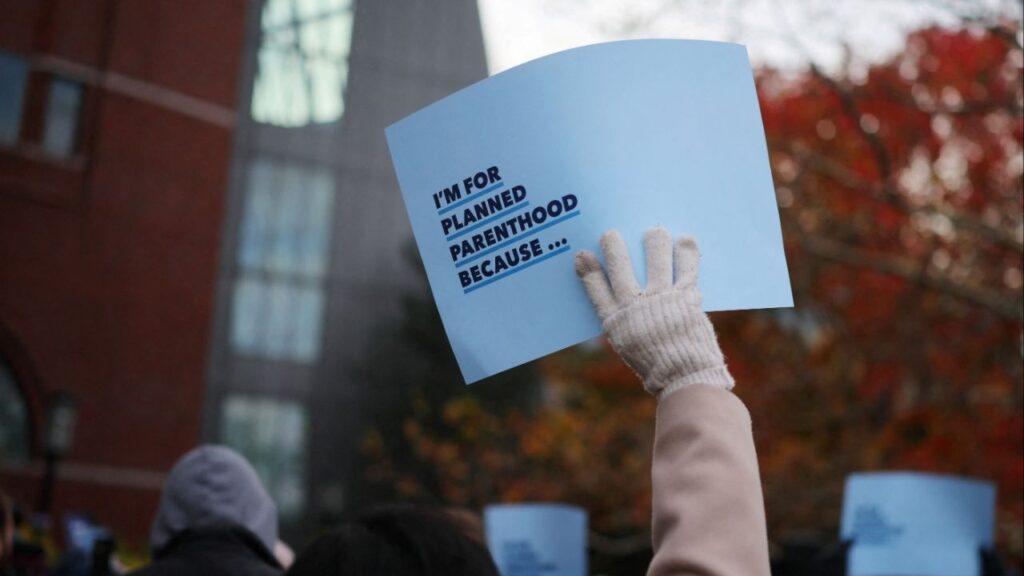Share
Gov. Gavin Newsom has taken grief for failing to fulfill what seems like a pretty achievable campaign promise: appointing a homelessness “czar” to help the 150,000 Californians living in shelters and on the streets.
Newsom’s quest, which at various points had the mayor of Sacramento, the state secretary of health and human services and a Washington DC-based consultant co-wearing the “czar” crown, culminated earlier this month in a Truman-esque “buck stops here” declaration.

Analysis
Matt Levin
CALmatters
Well, good czars are hard to find. But that’s partly because homelessness is a complex and difficult problem, with options that range, at best, from imperfect to limited. Some choices might bring people in from the streets over the long term, but are expensive and time-consuming. Others might prevent people from becoming homeless in the first place, but are difficult to efficiently target.
Poll after poll suggests Californians want something done about homelessness, ASAP. So, we’re temporarily making you czar. Here’s a menu of talked-about “solutions” rated with expert input according to speed, cost, and political feasibility. What would be your battle plan?
Option 1: Build Way More Permanent Supportive Housing

Subsidized apartments that charge people experiencing homelessness minimal rents with no limits on how long they can stay. Built by nonprofit developers and paid for with public dollars, they “support” residents with in-house or visiting case managers who bring tenants to health appointments, show them how to use appliances and connect them with job and safety net programs. Permanent supportive housing primarily helps the chronically homeless, who often have severe disabilities such as serious mental illness, drug addiction and physical ailments.
Cost: 💰💰💰💰 (Expensive)
Nonpartisan research consistently says permanent supportive housing is very effective at keeping the chronically homeless housed, which saves on health and law enforcement costs. But the upfront cost of building it is a lot, especially where it’s needed most — $500,000 per unit in Los Angeles, for example. Newsom recently pledged $750 million in new emergency homelessness funding for the entire state. If you used all of that to build new permanent supportive housing in L.A., you’d get 1,500 units. Los Angeles County alone had nearly 16,000 chronically homeless people in 2019.
Speed: ⏳ ⏳ (Relatively slow)
It takes one to three years in California to build this kind of housing. You can do some things to speed up the process, such as get rid of environmental reviews for new projects. But unless you’re buying a motel and converting it (more on this later), this is still going to take some time.
Political support: 👍🏽 👍🏽 👍🏽 (Decently strong)
Many homelessness advocates tout permanent supportive housing as the solution most worthy of more dollars, and the governor and big city mayors champion it frequently. Neighbors may not love the idea of new low-income housing on their block, but they hate it less than shelters. But ask Los Angeles Mayor Eric Garcetti how the cost and time of building new supportive housing plays politically. Once a rising star among Democrats with national ambitions, Garcetti has seen his popularity falter as a $1.2 billion voter-approved bond has generated just one unit after three years.
Option 2: Embrace ‘Right to Shelter’

A legal obligation for every city and county in California to provide shelter beds for every person experiencing homelessness, and a legal obligation for the homeless to accept shelter when offered. Advocates for “right to shelter” cite New York City’s success in using the policy to bring its homeless population indoors — New York has a much smaller rate of “unsheltered” homeless than California. Detractors argue “right to shelter” simply warehouses people experiencing homelessness and that in a world of finite resources, permanent housing should take priority.
Cost: 💰💰💰💰 (Expensive)
No reliable estimate exists for what “right to shelter” would cost statewide. But it’s not cheap for New York City, which spends nearly $2 billion annually on its shelter system. California has a much larger homeless population than New York, and would need more upfront investment to get new shelters built. The nonpartisan Legislative Analyst’s Office estimated providing a bed in a shelter for every homeless person in the state would cost $2 to $3 billion annually — not including the upfront cost of new construction.
Speed: ⏳ ⏳ (Relatively slow)
Building a shelter takes less time than permanent housing — if you can get neighbors and local elected officials to sign off. That’s a big if. Even progressive places like San Francisco have seen attempts to build new shelters blocked or delayed by lawsuits from neighborhood groups who fear crime and declining property values if a shelter is placed nearby. State laws have made it tougher to file these lawsuits in recent years.
Political support: 👍🏽 (Weak)
Not a ton of support for this one. The governor fears its cost, homelessness advocates fear its potential civil liberties restrictions and cities and counties would demand more funding if obligated to build new shelters. Speaking of…
Option 3: Sue Cities That Don’t Do Enough

Most of what California cities and counties do to address homelessness is voluntary; no state law punishes cities that fail to make progress towards reducing the number of people sleeping on the streets. Newsom’s Council of Regional Homeless Advisors recommended changing that earlier this month, with a new “legally enforceable mandate” that would force municipalities and the state to take specific actions towards ending homelessness. A “designated public official” could sue a city or county for failing to hit benchmarks on emergency shelters and permanent housing, and a judge could then seize control of a local government’s homelessness initiatives.
Cost: 💰💰💰💰 (Expensive)
Yes, we know all the options so far are expensive. Newsom’s task force conveniently omitted how much a “legally enforceable mandate” might cost the state. But it’s not going to be cheap. Cities and counties will demand additional resources to meet the state’s goals, whatever they are. Those funds also would likely have to be annual and ongoing — something the governor has been reluctant to approve.
Speed: ⏳ ⏳ (Relatively slow)
Newsom’s task force was also ambiguous on how quickly the state should force cities to reduce their homeless populations, recommending only an “aggressive but reasonable period of time.” Pressed, task force co-chair and Sacramento Mayor Darrell Steinberg said he would expect the vast majority of his medium-sized city’s homeless population to be housed in five years. Not every local government may be as ambitious, and it will take time for the state to set up the legal apparatus to make this work.
Political support: 👍🏽 👍🏽 (Mixed)
The idea has broad support, ranging from big city mayors to progressive homelessness advocates to elected officials from some smaller local governments. But to become law, such a measure would need a two-thirds vote of both chambers in the Legislature to be placed on the November ballot, and then a majority of the vote statewide. Democrats hold a supermajority in the Legislature, but the odds would be complicated if cost-conscious cities and counties push back.
Option 4: Go Big on Prevention

Many California cities have made strides in moving people from streets and shelters into safe, stable housing. But progress is hard to show when, as in San Francisco, three people are losing a safe place to live for every homeless person who’s being housed. Enter the many state and local programs designed to prevent individuals from falling into homelessness: emergency rental assistance, for instance, or eviction defense or “shallow subsidies” to keep families in precarious housing situations from falling through the cracks.
Cost: 💰💰 (Less expensive…but less efficient)
A Chicago call center for people on the brink of homelessness distributed $3.7 million in prevention funds to nearly 3,000 households in 2018. A few hundred dollars cash was often enough to prevent tenants from losing their homes. But it’s difficult to target those programs because it’s hard to know which low income families might have managed to avoid homelessness even without the cash assistance. Only a fraction of low-income Californians fall into homelessness.
Speed: ⏳ ⏳ ⏳ ⏳ (Relatively fast)
It’s easier to expand rental assistance programs quickly than to build new housing.
Political support: 👍🏽 👍🏽 👍🏽 👍🏽 (Strong)
Pretty much everyone is on board with doing more to prevent people from falling into homelessness. The real fight comes when finite financial resources are divided among prevention, shelter and permanent housing.
Option 5: Convert More Motels and SRO’s to Homeless Housing

Not all permanent housing and emergency shelters need to be built from scratch. Local governments also can purchase and convert existing housing — like motels and single-room-occupancy properties — into homeless housing. Or they can partner with motel owners to lease rooms or entire buildings. The state could incentivize local governments to do more of this by altering grant criteria and tweaking state law.
Cost: 💰💰 (Relatively inexpensive)
Buying and rehabbing an existing apartment building or motel is typically much cheaper than building a new one. New permanent housing units could be brought online for roughly half the cost of building new ones, according to Sharon Rapport from the Corporation for Supportive Housing. Costs are rising, however — SRO’s in particular have been snatched up by private developers in recent years and converted to higher-end housing.
Speed: ⏳ ⏳ ⏳ (Relatively fast, if…)
The problem here is finding available properties. There just aren’t that many motel owners with tons of vacant units desperate for local governments to make them offers. Local zoning restrictions on motel conversions don’t help. Plus, if you’re going to use public funds, you can’t just throw people on the street into a dilapidated SRO — homeless housing has to meet certain standards. Motel and SRO conversions are a tool in the toolbox, but not a silver bullet.
Political support: 👍🏽 👍🏽 👍🏽 👍🏽 (Strong)
A popular idea with fairly widespread support and not a ton of opposition.
Option 6: ‘Special Courts’ for the Homeless
What is it?
Former state lawmaker Mike Gatto is gathering signatures to get the “California Compassionate Intervention Act” on the November ballot. The initiative would ramp up enforcement of “quality of life” crimes like public intoxication and “willfully disturbing others” on public transit that are often ignored or deprioritized by law enforcement. Those arrested and convicted for such crimes and found to be suffering from drug addiction or mental illness would be sentenced to a three-month drug rehabilitation program or up to nearly a year in a mental hospital.
Cost: 💰💰💰 (Relatively expensive)
An estimated $900 million a year, according to the Legislative Analyst’s Office. Although it’s possible it could cost more.
Speed: ⏳ ⏳ ⏳ (Relatively fast, if…)
Unclear how long it would take to set up the alternative court system but, in theory, it could be law Jan. 1.
Political support: 👍🏽👍🏽 (Mixed)
While the initiative’s author insists that private polling shows widespread public support, many progressives in the state detest it. Critics say it criminalizes homelessness and poverty without attacking the root of the problem: a lack of affordable housing. It’s also unclear what happens to a person experiencing homelessness after they exit rehab or a psychiatric facility.
Option 7: ‘Cabin Communities’ and Tiny Homes

Pioneered in Oakland, “cabin communities” offer small, tough-shed like structures in place of tent encampments. Two people can occupy a cabin at a time, and occupants can bring pets and their own belongings — something many emergency shelters don’t allow. Each community can shelter about 40 people at a time, offer meals, and restroom facilities, and provide caseworkers who try to place residents in longer-term housing. In a variation, some cities have explored “tiny home” villages with 500 square feet per unit of living space.
Cost: 💰💰 (Relatively inexpensive)
Cabin communities are cheap. According to budget documents analyzed by the Bay Area Council Economic Institute, cabin communities cost $5,000 per bed to build and $21,250 per year to operate.
Speed: ⏳ ⏳ ⏳ (Relatively fast, if…)
Quicker than building new emergency shelters or permanent housing. Oakland put up four cabin communities within 15 months. But that’s assuming land and resources are immediately available.
Political support: 👍🏽👍🏽👍🏽👍🏽 (Strong)
Lower cost, quicker deployment, reduces visible homelessness — what’s not to like? Homelessness advocates say while cabin communities can help, they’re a stopgap, not a long-term solution.
Option 8: Build Way More ‘Extremely Low-Income’ Housing
What is it?
Housing for very poor Californians, heavily subsidized by public dollars. These typically look like apartment buildings but don’t include case managers or wrap-around services for people with mental illnesses or physical disabilities. According to the nonprofit California Housing Partnership, 1.3 million California renter households are considered “extremely low income”, making less than $25,000 a year. They compete for less than 300,000 affordable and available rental homes.
Cost: 💰💰💰💰 (Expensive)
Expensive if you want to tackle the problem comprehensively. The nonpartisan Legislative Analyst’s Office estimated it would cost $15 billion to $30 billion annually to build new housing for every low-income Californian who needs it. Targeting those at the lowest end of the income ladder will reduce those costs, but the price tag will still be expensive.
Speed: ⏳ (Slow)
Building any new housing takes time. Building subsidized low-income housing typically takes even longer, as nonprofit developers must cobble together disparate funding sources before pitching a viable project, a process that often takes years. A homelessness czar could push for some policy tweaks here and there to speed things along, but this won’t happen overnight.
Political support: 👍🏽👍🏽 (Mixed)
Most homelessness experts and advocates agree building more low-income housing is one of the best long-term homelessness prevention strategies. Voters tend to agree, approving billions in affordable housing bonds at the state and local level over the last few years. But the ongoing dollars required to meet the scale of the problem make this tough politically.
Option 9: Tax Empty Houses
What is it?
A group of homeless Oakland mothers made national headlines when they occupied a vacant property owned by a corporate house-flipper. Social justice organizations have lobbied for years to transform vacant housing into homeless housing, citing the cruel irony of luxury units remaining tenant-less while people slept on the streets.
One option would be to levy a special tax on vacant units to underwrite housing for homeless people. Nonprofit developers and community land trusts also could have right of first refusal over properties auctioned off after foreclosure. A universal property registry could be created so every landlord has to report whether their unit is occupied.
Cost: 💰💰? (Relatively inexpensive but…)
This really depends on how vacant properties are sanctioned, how many a city has and how many can legally be turned into homeless housing. Implementing a tax would be straightforward, but local governments still have to certify occupancy. And it’s no silver bullet. Cities such as Vancouver and Washington D.C. have adopted vacancy taxes but homelessness remains a problem.
Speed: ⏳⏳⏳ (Relatively quick but..)
It depends again on the plan for the housing. A vacant property tax can be approved quickly, but it can take time to make vacant property habitable.
Political support: 👍🏽👍🏽 (Mixed)
Tenant rights groups and anti-gentrification activists love this idea. Not so popular among moderates, landlords or anyone who owns a vacation home.
Option 10: Do Nothing

The status quo. No additional state resources beyond what we currently spend, no major policy changes, no ballot initiatives…nada.
Cost: 💰💰💰💰💰 (Very expensive)
Many of your options as homelessness czar have high price tags. But keep in mind homelessness already drains billions of dollars from state and local coffers in indirect costs. The state doesn’t have a total for how much homelessness strains public health, law enforcement, park and street maintenance…but it’s a lot. One study estimated that Santa Clara County alone spent a half-billion dollars annually on indirect costs associated with homelessness, such as emergency room visits and court costs. Not to mention lost business, tourism and other private sector costs.
Political support: 👎🏽 (Not much)
California voters want this problem fixed, one way or another. In a recent nonpartisan poll, Californians identified homelessness as the most important issue confronting Newsom and state lawmakers this year — more important than the economy or the environment or health care. No pressure, Czar.
CalMatters.org is a nonprofit, nonpartisan media venture explaining California policies and politics.
Categories

Apple TV Down for Thousands of Users, Downdetector Shows


















